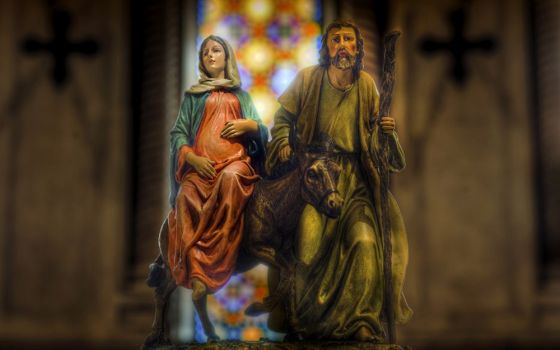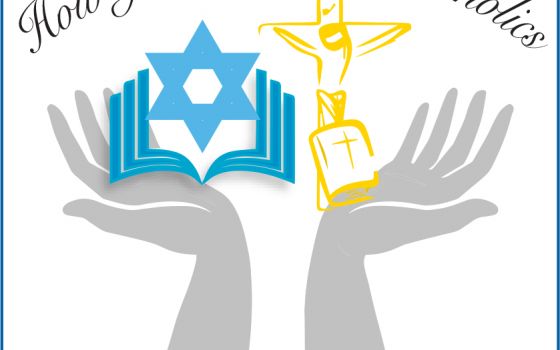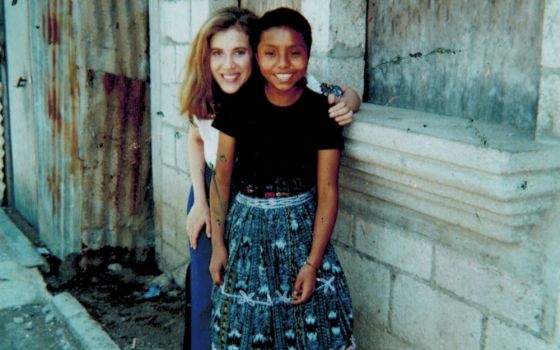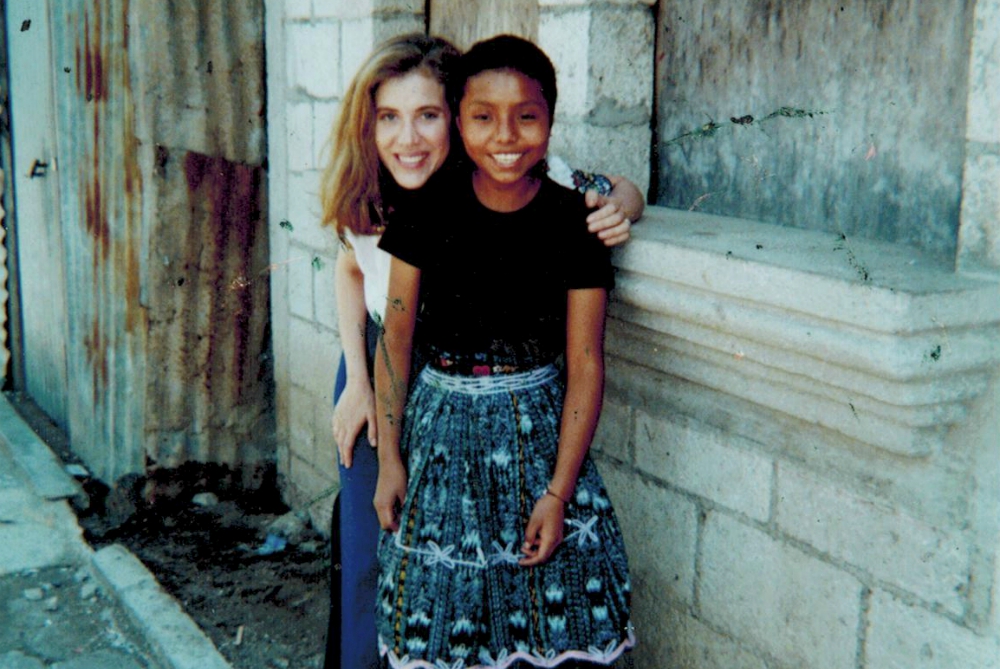
Julia Lieblich and Kendy Carmona in 2002 (Provided photo)
Editor's note: This is the second in a series of essays by Jewish writers reflecting on their experiences with the Catholic community and answering the questions: What makes us approachable today, given our history and particularly this moment when we have revealed the worst of ourselves in the ongoing sex abuse scandal? Do you see something in us, in our art, in our tradition, in our work and ministries, that we might even overlook today given the tensions and embarrassing scandals within our community? For a more detailed explanation of the series see "NCR Connections: New series explores how Jews appreciate Catholic tradition."

Irma Hernandez says Our Lady of Guadalupe brought me to Guatemala 25 years ago. We met by chance when I was a lonely 34-year-old journalist from Boston who had come to look at the weaving in a Maya pueblo at the foot of three volcanos and famous for intricate huipils (women's blouses) in vibrant reds, yellows and blues. I had missed the bus back to the colonial city of Antigua where I was staying, and Irma, a short, slender woman with long black hair and high cheekbones who looked to be in her early 20s, found me wandering aimlessly.
During the next two decades, I became known in San Antonio Aguas Calientes as the gringa "who came back." I was drawn to Guatemala like the butterflies that seemed to follow me as I walked along the dirt road to Irma's one-room house without running water.
In time, she would ask me to be the madrina (godmother) to her five young children, including Henry, a boy with spina bifida who needed a wheelchair. The church would not accept a Jewish woman in the role, I told her. But Irma did not care much what the local priests thought. The right godmother, she reasoned, was the one Guadalupe sent to help with doctors and school.
In a predominantly Catholic and evangelical town, her family had never met a Jew. They vaguely remembered a couple of sermons saying the Jews had killed Christ. And when a nearby volcano erupted, the story went, the devil was spitting out Jews. But Irma had no use for such tales of hatred.
"Guadalupe loves everyone," she told me. And whether I believed in her, Guadalupe loved me too.
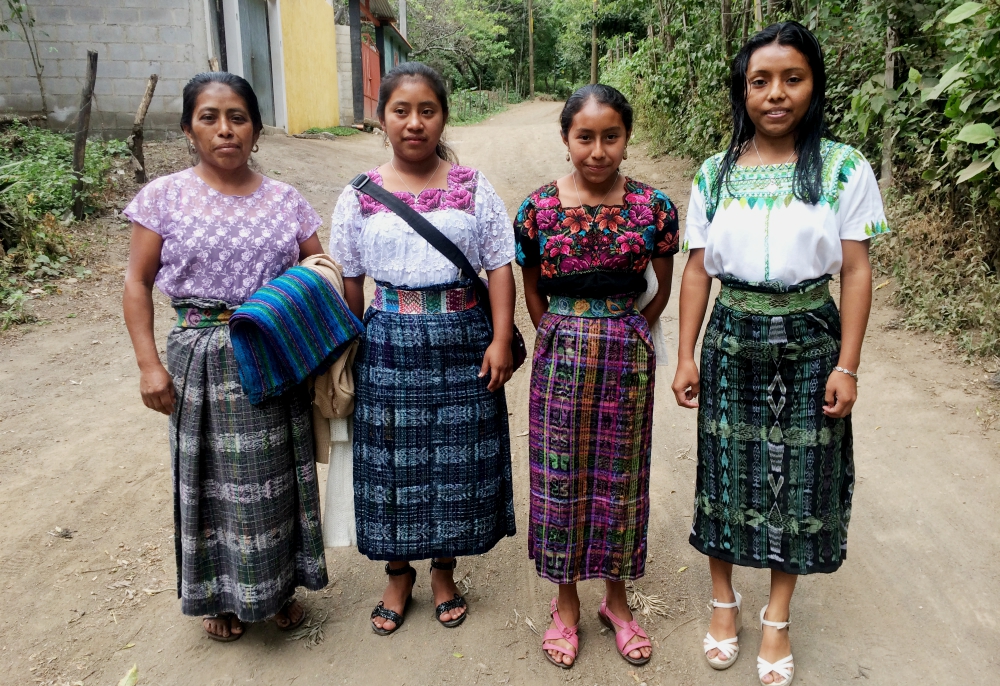
From left: Irma Hernandez and her daughters, Heidy Carmona, Maria del Rosario Carmona and Kendy Carmona in San Antonio Aguas Calientes in 2013 (Provided photo)
I am Jewish culturally and religiously, and I do not romanticize the Catholic Church, having quit my job as a religion writer at the Chicago Tribune after interviewing survivor after survivor of priest sex abuse had left me too depressed to work. When I wrote my first book, Sisters: Lives of Devotion and Defiance, about obedient nuns who became progressive sisters, I saw Catholic clerics disparage the women I found most courageous while those clerics reaped the benefits of privilege the church bestows on men.
But I have seen the beauty of a tradition that inspires my adoptive family to the south and enriches my own spiritual life. I am currently reading all 10 books of essays and poems by late Catholic activist Nancy Mairs, who once had a large mural of Guadalupe painted in her study. I joke that I am a magnet for nuns, often running into them at peace rallies in the United States and Guatemala.
The late Darlene Nicgorski, a onetime School Sister of St. Francis who was convicted on five felony counts of harboring and transporting refugees from Central America during the sanctuary trial, first encouraged me to go to Guatemala. I wondered if she thought something magical awaited me in the Land of Eternal Spring.
During my twice-yearly visits to San Antonio Aguas Calientes, I spent hour upon hour walking at a snail's pace in processions with my goddaughter Kendy, whose braided black hair framed a heart-shape face and large brown eyes. Dressed in her finest huipil and long skirt wrapped around her thin waist, she looked adoringly at the larger-than-life wooden statue of Guadalupe carried on the backs of villagers.
Our favorite telenovela was "La Rosa de Guadalupe," an hourlong soap opera during which Guadalupe leaves a telltale rose when she performs a miracle.
We once met nuns in full-length habits by the road who loved Guadalupe. They invited us to their convent where they sang an old song to me.
"Julia, Julia, Julia, Julia de amor."
When I commissioned my compadre, Flavio (the father of my godchildren), and Lucvin, my godson, to build a little house for me on their property, I was not surprised to see they had installed an 18-inch-tall stone statue of Guadalupe in the entryway of my new home, though Flavio was not the least bit religious. He once spent a whole day designing a crèche simply because he found it beautiful.
Advertisement
Guadalupe looked over me and Kendy, with whom I shared my little house, and we kept a rose in her honor in a glass by her side.
I wondered whether it was right to focus on one family when there were so many children in need, until they became my family and it seemed natural to share some resources.
I felt joy watching them flourish, my two youngest goddaughters becoming the first in their large extended family to graduate from high school. After months of physical and speech therapy, Henry said his first words at age 6. When he walked by himself for the first time at 18, even Flavio called him our milagro (miracle).
Like my late mother, Kendy went to nursing school, and during the capping ceremony, I pinned my mother's gold hospital pin on her lapel. Kendy was the daughter I never had, the one a generous mother shared with me. They even have a word in Spanish for the relationship between mothers and godmothers: comadres.
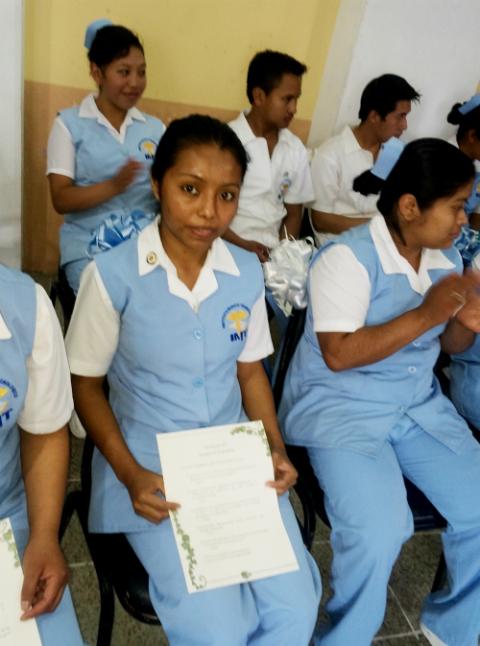
Kendy Carmona graduates from nursing school in 2013. (Provided photo)
I spent 2016 living in Guatemala, and I watched Kendy, now 27, leave our house every morning at 4 a.m. for the two-hour drive to a Catholic hospital in Guatemala City, where she cared for premature infants. Late at night, she came home exhausted but eager to tell me stories of babies who had survived.
Only when Kendy developed a mysterious illness that summer did I need Guadalupe, too. Kendy held me in a full body hug as she writhed in pain in the taxicab to the hospital in Antigua. We transferred her by ambulance to a hospital in Guatemala City where she stayed for four weeks in the intensive care unit. I held her hand while relatives in veils prayed fervently over her limp body as she looked at us longingly, unable to move or speak.
When the doctor told us Kendy would live, we celebrated and put roses of thanks at Guadalupe's altar. In the early morning hours, Kendy died.
I wrapped her in in the long lace veil she had asked me to bring for her upcoming church wedding, and Irma and I stood vigil over the body. At the funeral in the pounding rain, I held Irma in a drenched huipil as she draped herself over Kendy's casket and wept.
I wondered whether Irma would lose faith in Guadalupe. No, she said. We could never understand God's mysterious ways. Although we would suffer for the rest of our lives, Kendy was in a better place. Irma was sure of it. And we would pray before Guadalupe for strength and comfort, Catholic and Jewish comadres.
[Human rights reporter Julia Lieblich, a scholar-in-residence at the Newberry Library, is co-author of Wounded I Am More Awake: Finding Meaning After Terror. She is writing a memoir about her relationship with her adoptive Maya family.]



